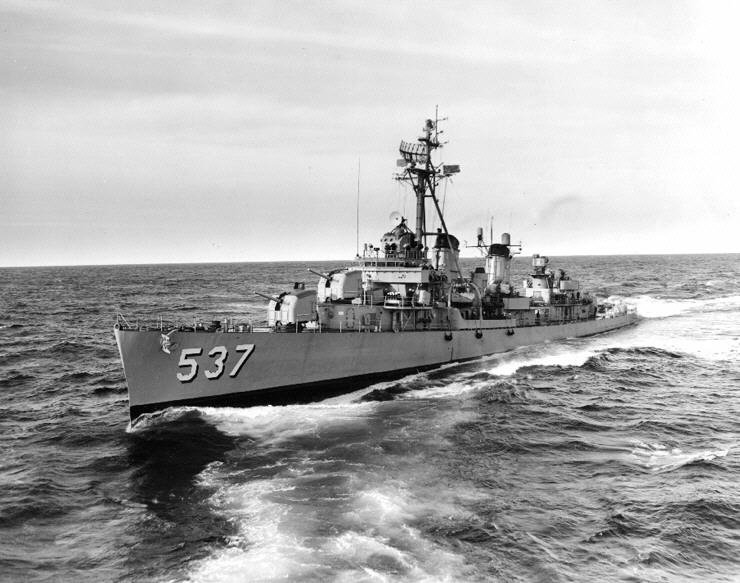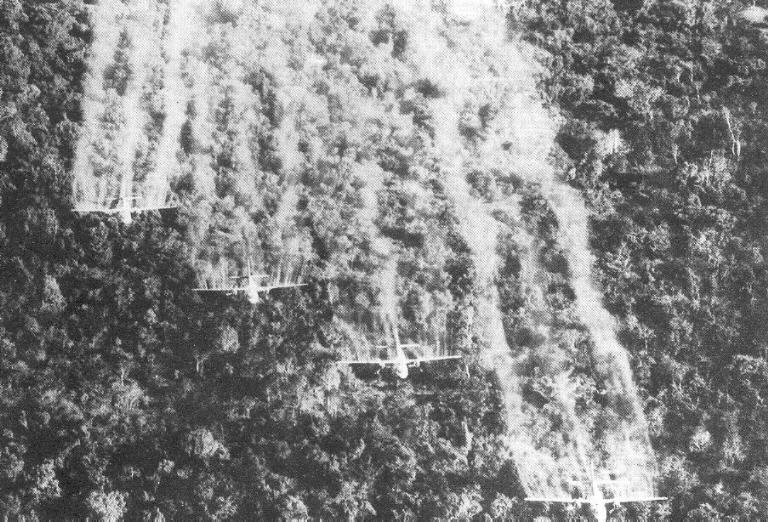The Vietnam War:
Before we go any further, it's important to discuss the setting of Miss Saigon. It takes place during what is called the Vietnam War. This is a period that historians place as lasting from 1956 to 1975. It was a period where the US was occupying Vietnam in an effort to fight Communism. Ultimately, we lose the war.
The Beginning:
A Vietnamese leader named Ho Chi Minh had already appealed to Western Powers at the end of World War One hoping to convince them to give Vietnam self-determination (as they were doing with numerous Eastern-European nations) to allow them to create a democracy. His appeals were ignored, and he turned to Communist powers, who were more sympathetic to his plight. He organized what was called the Vietminh, to fight the French. They were very successful in doing so, despite the US funneling funds to the French out of fear of Communism.
Dien Bien Phu was a town held by the French. The Vietnamese were able to capture it, frightening the French into surrendering. They signed the Geneva Accords, which stipulated that the French would leave Vietnam, provided that it be divided along the 17th parallel.
The Viet Kong:
Diem was an extremely unpopular dictator in both the North and the South. The Viet Cong (VC) were south Vietnamese guerrillas who sought to overthrow him and any other Western appointed leaders. Despite being from the south, they were supported by the North. HO Chi Minh showed his support by creating what were known as the Ho Chi Minh Trail, a system of hidden paths through the jungles of Vietnam that supplied the Viet Cong.
Around this time, Diem began persecuting Buddhists, and several monks protested by lighting themselves on fire. This understandably angered the international community, and the US decided to discontinue support to Diem. We still needed a foot in Vietnam though, so the CIA executes Diem and has him replaced with another dictator.
The Gulf of Tonkin Resolution:
In 1964, under president Lyndon P. Johnson, the US had a Navy presence in Vietnam. The US troops and Vietnamese troops were uneasy with each other, and on 2-August-1964 a North Vietnamese patrol boat fired a torpedo at a US destroyer (missing the ship), prompting the destroyer to fire back (not missing). Two days later, the North Vietnamese fire on a US destroyer once again, and missed again.* Lyndon B. Johnson starts a bombing raid of North Vietnam. He asks Congress for support, and Congress gives him the go-ahead to use "any means necessary" to repel attacks on American troops. This is known as The Gulf of Tonkin Resolution, and launched the US into an unofficial war against Vietnam that would span decades. Operation Rolling Thunder was the first sustained bombing raid of Vietnam. It also sent in 180,000 troops, led by William Westmoreland. It essentially signaled that the US was going to take over where the French had left off.
The War Itself:
The war was a war of attrition. This means that it would be won by wearing down the opponent with continuous losses instead of an outright conquest. In this case, we were the opponent being worn down. While the Vietnamese had fewer resources, they were determined to win the war by any means necessary. They used guerrilla warfare very effectively, striking from the jungles at unprepared American troops, and disappearing before the US could bomb them. It was estimated that the average attack by the Viet Cong lasted two minutes. They had the added benefit of being adept at fighting in the dense jungles of Vietnam, and booby traps littered the jungles. Another major factor is that the US forces were very unpopular in both the North and the South. The US wanted to "win the hearts and minds of the native people," but if the Viet Cong were suspected to be utilizing an area the US troops were instructed to torch any property and kill any livestock. As such, the Viet Cong had a good amount of support from the average Vietnamese. This was probably the most important factor that the Viet Cong had going for them: they were just ordinary people fighting to save their homes. Anyone, man woman or child could be a Viet Cong member, and would fight literally to the death to win. To avoid bombing raids from the US, they literally lived in tunnels. These were people willing to live in tunnels for years. They would not lose.
For the US's part, their strategy was to just throw as much as possible as they could at the problem. Record amounts of troops were sent to Vietnam, mostly drafted men, the average age of the troops in Vietnam was 18. Because the only ways out of the draft were to either be injured or in college, it was primarily poorer young men who were sent to Vietnam. Despite African Americans making up 10% of the US population at the time, they accounted for 20% of US casualties in Vietnam. Where conventional troops were failing, the US tried to compensate through planes. Because the Vietnamese jungles presented such an advantage to Vietnamese troops, the US attempted to destroy them. They torched the jungles, bombed them, and dumped a dangerous chemical pesticide called Agent Orange on the forests to kill them.** The conditions were awful, and troops stationed in Vietnam were mostly just concerned with living to get out. Returning Vietnam veterans had high rates of PTSD, alcoholism, and drug use. The US responded by sending the troops cigarettes to help them cope with the stress. The Army of the Republic of Viet Nam (ARVN) was the South Vietnamese's official military.
The Tet Offensive:
The War in the US:
The war was extremely unpopular back in the US. People who opposed the war were called Doves, while supporters of the war were called Hawks. During the war, a credibility gap formed between what the government reported, and what freelance reporters showed. Though the US was adamant that we were winning the war, reporters brought back images of death and destruction. Much of the distrust for the government we feel today stems from this period. The pressure from the war caused Lyndon B. Johnson to decline to run for a second term (unprecedented at the time), and allowed Richard Nixon to take the presidency. He had campaigned on the platform of ending the war, and began a process known as Vietnamizatoin, where the US would slowly pull out of Vietnam, replacing American troops with Vietnamese troops. This was his way of achieving "Peace with honor," where we get to pull out of the war without surrendering. Despite this, he also increased bombing on North Vietnam, Laos, and Cambodia.
The My Lai Massacre occurred on 16-March-1968, but was covered up until late in 1969. A platoon of US troops enters My Lai village, and rounded up all of the villagers, and killed them. Somewhere between 300 and 500 innocent people were slaughtered. The atrocity was later discovered, and 25 men are tried for the murders, but all were found innocent*** because they were just following the orders of Lt. Calley, who was persecuted.****
The War is Extended:
On 30-April-1970, Richard Nixon went on national television to announce that US troops had invaded Cambodia. The Pentagon Papers were a series of papers leaked to the New York Times. They were 7,000 documents that demonstrated that the war had been planned to extend into other countries, and that the US had every intention of staying until North Vietnam was defeated. The documents went as far back as Eisenhower, and showed that the government had been lying to the American people for years. Towards 1973, Nixon increases the bombing of Vietnam, but the attacks are not successful. Polls showed that the majority of Americans wanted out of Vietnam, and we were being pressured by China and Russia, who were allies of North Vietnam.
19-March-1973 the US signs a peace treaty with Vietnam. The treaty allowed for the North Vietnamese to keep troops in South Vietnam, but the North and South were not to fight. Thr treaty also organized for all prisoners of war to be returned, provided that the US finally left Vietnam.
The Fall of Saigon:
In 1975, North Vietnam launched a massive invasion of South Vietnam in March. Any remaining forces were quickly overwhelmed, and Vietnam was reunited back into one Communist country. Saigon fell, and the capital of Vietnam was renamed as Ho Chi Minh City. Refugees poured out of Vietnam. They were called boat people because the small boats taking people out of the country were crammed to the point of sinking.
The Legacy of the War:
- 58,000 American troops died, mostly young men under the age of 20.
- 303,000 American veterans return wounded.
- 1.5 million Vietnamese died.
- 15 million Vietnamese fled the country.
- 400,000 South Vietnamese were put into harsh labor camps.
- The surrounding area was incredibly destabilized, and the unrest in the area directly led to the genocide that would later take place in Cambodia.
*Evidence later surfaced that showed that this second attack on American Navy may have been fabricated by US officials looking for an excuse to start a war. With the technology at the time, troops would have had to have physically seen the torpedo launched, and weather reports for the day the attack apparently happened show that visibility was very low. In addition, people present on the ship that was "fired upon" later claimed that they never saw anything.
**Agent Orange causes birth defects in areas sprayed with it to this day. For the love of God, do not Google image search Agent Orange. Just don't. Please. Trust me. I know you're curious now, but don't do it. I saw some things for a few seconds and now they haunt me.
***Incidentally, this is not a legitimate excuse, nor was it at the time. A precedent had been set in the Nuremberg Trials, held after World War Two, which established that soldiers were responsible for human rights atrocities committed under orders, which they had every right to disobey if the orders were morally incorrect.
****Strangely enough, the story of the My Lai Massacre would later be converted into a musical called The Lieutenan. The musical was a rock opera knockoff of Jesus Christ Superstar, and featured Lt. Calley as the hero, incorrectly fingered as the fall guy for the military. It was fortunately not successful and closed 7 years to the day of the massacre.







No comments:
Post a Comment